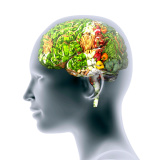For many of us, life moves fast. Perhaps this is why we want immediate results whenever we seek a solution. This attitude is especially prevalent when it comes to improving our health. Unfortunately, the quick effects of taking a pill or undergoing surgery are not always the best way to reach one’s health goals. Requiring time and commitment, lifestyle changes typically don’t showcase their benefits right away. However, improving your well-being with positive daily habits is consistently proven to produce better results than most of modern medicine’s “quick fixes.”
The ability of regular exercise to reduce fatigue is a stellar example of how a positive lifestyle practice is more valuable than an energy drink or stimulant. As long as your chosen exercise is low-impact and is part of a gradual program, researchers in this field have all come to the same conclusion – regular exercise plays a significant role in increasing energy levels and reducing fatigue.
Based on a study published in the November 2006 issue of the journal Psychological Bulletin, researchers from the University of Georgia analyzed 70 randomized, controlled trials on over 6,800 participants to determine the impact of regular exercise on fatigue. They found the following:
- More than 90 percent of the studies consistently showed that sedentary people who completed a regular exercise program reported reduced fatigue compared to groups that did not exercise.
- The effect of exercise (reduced fatigue by .37 standard deviations) was stronger than treatment with stimulants such as the narcolepsy drug modafinil (reduced fatigue by .23 standard deviations).
- Nearly every group studied (from healthy adults to cancer patients to those with chronic conditions such as diabetes and heart disease) had an improvement in energy levels from exercise.
According to lead author Tim Puetz, “We live in a society where people are always looking for the next sports drink, energy bar or cup of coffee that will give them the extra edge to get through the day. But it may be that lacing up your tennis shoes and getting out and doing some physical activity every morning can provide that spark of energy that people are looking for.”
Following up on their previous research, investigators from the University of Georgia conducted a randomized controlled study to examine the effect of six weeks of chronic exercise training on feelings of energy and fatigue in sedentary, healthy young adults reporting persistent fatigue. As published in the February 2008 edition of the journal Psychotherapy and Psychosomatics, they found that:
- Sedentary people who regularly complain of fatigue can increase their energy levels by 20 percent through regular, low intensity exercise.
- Sedentary people who regularly complain of fatigue can decrease their fatigue by 65 percent through engaging in regular, low intensity exercise.
A systematic review published in the December 2006 edition of the Journal for Advanced Nursing found that low impact aerobic exercise, such as walking and cycling, can effectively reduce fatigue in adults with chronic autoimmune conditions. A team led by nurse researcher Dr. Jane Neill from Flinders University in Adelaide, analyzed 36 research studies published between 1987 and 2006 in detail. They concluded that people with conditions like multiple sclerosis, rheumatoid arthritis and systemic lupus erythematosus for which fatigue was a major symptom, could benefit significantly from exercise that gradually increased in intensity, duration and frequency. Exercises that functioned as a fatigue treatment included low-impact aerobic classes, walking, bicycling, jogging and swimming.
As published in the May-June 2009 edition of the journal Medsurg Nursing, researchers in Rockford, Illinois did a systematic review to determine if patients receiving treatment for cancer experienced less treatment-related fatigue if they participated in a regular committed exercise regimen, compared to those who did not exercise regularly. With eight out of 10 studies confirming their conclusion, they found considerable evidence that an individualized exercise program for patients on chemotherapy and/or radiation therapy reduced fatigue levels.
Findings that low-intensity exercise improves feelings of fatigue come as no surprise to Pete McCall, Exercise Physiologist at the American Council on Exercise. Offering an explanation to this phenomenon, McCall says, “If a sedentary individual begins an exercise program it will enhance the blood flow carrying oxygen and nutrients to muscle tissue improving their ability to produce more energy (the chemical adenosine triphosphate).”
Committing to a regular, low-intensity exercise program produces more consistent energy than a quick fix (stimulant-packed beverage, drug or supplement) is capable of. Whether tiredness stems from cancer, an autoimmune disease or has no discernable medical cause, beginning a daily exercise program is a proven route toward fatigue relief.




